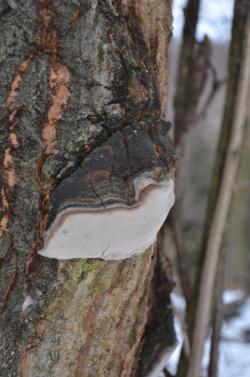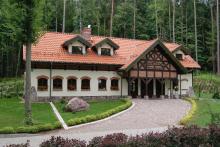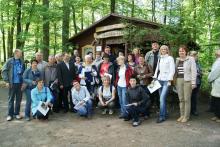 Asset Publisher
Asset Publisher
Polish forests
Poland is in the European lead, while concerning the area of all forests. They cover about 29,2 % of the country territory, and grow within the area of 9,1 million hectares. The overwhelming majority of the forests is state owned, of which almost 7,6 million hectares are managed by the State Forests National Forest Holding..
The number of Polish forest is still growing. The forestation rate of the country has increased from 21 % in 1945 to 29,2 % at the moment. Between 1995 and 2008, the forest area increased by 310 thousand ha. The basis for afforestation works is the "National Programme for Increasing the Forest Cover" (KPZL), assuming an increase of the forestation rate up to 30 % by 2020 and up to 33 % by 2050. Polish forests abound in flora, fauna and fungi. 65 % of the total number of animal species live there.
The forests grow in our country on poor soils, mainly because of the development of the agriculture in previous years. It influences the distribution of the types of the forest sites in Poland. Over 55 % of the forest areas is covered with coniferous forests. In other areas, there are forest sites, mainly the mixed ones. Their small part constitute alder and riparian forests – not more than 3 %.
In the years 1945 – 2011 the area of natural deciduous tree stands within the area of the State Forests National Forest Holding increased from 13 to 28,2 %.
Within the lowlands and uplands the most often occurring tee species is pine. It covers 64,3 % of the forest area of the State Forests National Forest Holding and 57,7 % of private and commune forests. In the mountains the predominant species is European spruce ( in the west) and European spruce with beech (in the east). Domination of pine is the result of carrying on sustainable forest management in the past. Once, the monocultures (crops or cultivations of one species) were the answer to the great demand of industry for wood. Such forests appeared to be quite fragile to climatic factors. They also were often the prey of pests' expansion.
In Polish forests, the share of other tree species, especially deciduous trees have been systematically increasing. The foresters have stepped aside from monocultures – that is why, they try to fit specific species of the forest stand to the natural stand, that would be proper for the given area. Thanks to that, in the years 1945 – 2011, the area of the deciduous tree stands within the lands of the State Forests National Forest Holding increased from 13 to 28,2 %. There occur more and more frequently the following tree species: oaks, ashes, maples, sycamore maples, elms, but also birches, beeches, alders, poplars, hornbeams, aspens, tilias and willows.
Our forests are the most often represented by the forest stands aged 40 to 80 years. The average age of the forest equals 60 years. More and more trees are of big size at the age over 80 years. Since the end of the Second World War, the forests' area has increased up to almost 1,85 million hectares.
Raport o stanie lasów w Polsce 2012
 Asset Publisher
Asset Publisher
Czyreń osikowy - pasożyt topoli osiki
Czyreń osikowy - pasożyt topoli osiki
Grzyby z rodzaju czyreń (Phellinus) rozwijają się na drzewach różnych gatunków. Niektóre mogą występować na wielu gatunkach, z kolei inne czyrenie rozwijają się tylko na jednym gatunku drzewa.
Przykładem grzyba nadrzewnego mającego szeroki wachlarz swoich ofiar jest czyreń ogniowy (Phellinus igniarius). Możemy spotkać go m.in. na wierzbach, grabach, klonach, topolach, a także na drzewach owocowych. Natomiast grzybem specyficznym dla poszczególnych gatunków drzew jest np. czyreń sosnowym (Phellinus pini), którego spotkamy wyłącznie na sosnach lub też tytułowy czyreń osikowy (Phellinus tremulae), którego głównym żywicielem jest topola osika. Można co prawda spotkać go na olszach, dębach i jarzębach, jednakże są to bardzo rzadkie przypadki.
Czyreń osikowy ma bardzo charakterystyczne owocniki, dzięki czemu nie sposób pomylić
go z innymi przedstawicielami tego rodzaju. Wyrastają one spod kory i początkowo mają kształt guza, jednakże w miarę wzrostu przybierają specyficzny kształt przypominający kopyto. Czasami można również spotkać owocniki czyrenia osikowego w formie rozpostarto-odgiętej, gdy wyrastają pod gałązkami i niejako je obrastają, tworząc tym samym ciekawą postać. Często spotykane są pojedyncze owocniki, ale można także trafić na drzewa niemalże obrośnięte owocnikami. Pojedynczy owocnik dorasta zwykle ok. 18 cm szerokości i ok. 10 cm grubości. Podobnie jak u innych czyreni owocniki te są wieloletnie.
Jak na hubę przystało czyreń osikowy jest organizmem pasożytniczym i saprotroficznym.
Do zakażenie drzew dochodzi najczęściej w miejscach zranień, czy to po uszkodzeniu kory, czy też po odłamaniu gałęzi. Ze względu na sposób bytowania czyreń osikowy przyczynia się
do powstania białej zgnilizny drewna, obniżając tym samym jego jakość i wartość.
Jednakże rozkładając drewno czyreń osikowy odgrywa również istotną rolę w nieustannym obiegu materii i przepływie energii w ekosystemach.
Czyreń osikowy jest dość rzadkim grzybem, przez co znajduje się na Czerwonej liście roślin
i grzybów Polski ze statusem "E", jako gatunek wymierający.


 fot. Paweł Fabijański
fot. Paweł Fabijański
 fot. Paweł Fabijański
fot. Paweł Fabijański
 fot. Paweł Fabijański
fot. Paweł Fabijański










